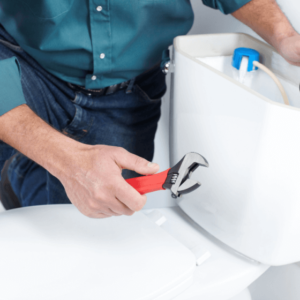If your budget doesn’t have room for new cabinets, don’t worry. You can give your wood cabinets a quick makeover with a fresh coat of stain. Using a different color stain—even as simple as going one shade darker or lighter—can give your kitchen, bathroom or other rooms in your home the new, updated look you want.
Step 1: Choose a Stain
Decide on a stain finish. Before starting, you need to have an idea of what you want your finished cabinets to look like. The color or shade of stain you use affects how a room feels, especially the kitchen. To open up a room and make it feel larger, opt for a light stain. To add warmth to a larger kitchen or room and make it seem cozier, choose a darker stain. Also, keep in mind the type of wood from which your cabinets are made. You want the stain color you are going for to complement the wood. Some stains work better with a particular wood more so than others. You must take into consideration the natural color of the wood and the size of the wood’s pores. For example, woods such as rosewood, cherry and mahogany are types that are rarely stained because of their natural appearance. They are usually just protected with a clear coat. Woods such as maple are less porous than others and so are harder to stain. For help deciding, get advice from an associate at your local True Value hardware store.
There are several types of stains to choose from. There are oil-based and water-based stains, gel stains and stain/sealer in-one formulas. Oil-based stains penetrate into the wood without raising the grain but carry a strong odor. Instead, you may choose a water-based stain. They’re eco-friendlier and offer easy soap-and-water cleanup. They do often require a light sanding to minimize raising the grain.
Helpful Tip
Never use deck stain on cabinetry.
Step 2: Remove Hardware, Doors and Drawers, and Clean Surfaces
Remove cabinet doors and drawers, and their hinges, handles, knobs, closures and other hardware using a screwdriver. If you’re going to stain your cabinets with the doors on, you don’t have to remove the hinges. Just mask them with painter’s tape. Keep in mind, though, that staining the pieces may be easier with them removed.
Be sure to protect floors, countertops and any other surfaces in your kitchen or work area with drop cloths or plenty of newspaper. Also, remember to keep track of the hardware and which door or drawer corresponds with it
Clean the wood with trisodium phosphate (TSP), a heavy-duty cleaning powder. Dilute the TSP with water according to the manufacturer’s specifications. Use a sponge and the TSP solution to wash doors and cabinet exteriors, letting them dry completely.
Safety Alert!
Use TSP as directed by the manufacturer. TSP can corrode metal and damage finished wood. Be sure to wear protective eyewear and rubber gloves.
Step 3: Remove Old Finish
Remove the existing finish by sanding. Use a medium/low-grit sandpaper to remove the old finish and to smooth out any imperfections in the wood. Work carefully around any decorative details and curved areas. Always sand with the grain of the wood. Any swirl marks caused by sanding will stand out when you stain.
Using chemical strippers is another and often easier method. Using a medium-sized paintbrush, apply the solution evenly over the surface. Let it soak for 20 to 30 minutes then remove the old finish using a plastic scraper or a smooth, round-edged putty knife. The surface may be soft, so be careful not to damage it with the scraper. Allow the piece to dry completely. Most chemical strippers need to be mixed with water, so check the manufacturer’s directions before applying.
Safety Alerts!
Always follow manufacturer’s instructions and wear rubber gloves and protective goggles when using strong chemicals.
Never strip furniture near an open flame, as stripping chemicals can ignite.
Ventilate the room with fans or open windows — or remove cabinet doors and work in a well-ventilated work area like the garage or outside, if weather permits.
Once you’ve removed the old finish from the surface, use a clean rag to remove the finish from any areas you might have missed and to ensure the wood is completely bare. Let it dry.
If you use a stain stripper to remove the old finish, it’s a good idea to lightly sand the surface afterwards with fine-grit sandpaper. This will ensure a tighter bond between the wood and the new coats of stain.
Step 4: Apply Sanding Sealer
Applying sanding sealer or pre-stain wood conditioner is similar to priming the wood. The sealer helps the wood absorb the stain evenly. It can also be applied after staining to reduce the number of finish coats necessary. Shake the sealer container thoroughly and apply two thin coats using a small paintbrush. Don’t let the sealer puddle or fill in decorative grooves. Wipe off any excess stain with a clean cloth. Let the sealer dry completely before lightly sanding with medium-grit sandpaper in the direction of the grain. Wipe the wood again with a clean cloth.
Step 5: Start Staining
Apply stain with a cloth or medium-sized paintbrush and allow it to penetrate into the wood. Coat once for a light stain or apply additional coats for a darker shade. Wipe off excess stain with a clean cloth and allow the piece to dry completely. Lightly sand between coats using fine-grit sandpaper.
Helpful Tips
If you are using water-based stains, you can minimize raising the grain by moistening the wood with a damp cloth and sanding. Allow the wood to dry completely and sand lightly with fine-grit sandpaper. Repeat as necessary.
When staining cabinets, you usually don’t have to worry about the inside of the drawers or cabinets since these parts are rarely visible. But you may want to stain the inside of cabinet doors.
Step 6: Finish It
When you’re done staining and the surfaces have dried, make sure you’re happy with the color of the wood. Use a small- or medium-sized paintbrush to apply a light polyurethane sealer or clear varnish to the wood to give it an extra layer of protection and a shine that will last for years. Follow the manufacturer’s instructions for application tips and drying times.
Reinstall the cabinet doors and drawers and their hardware after the stain and finish has dried completely.
Congratulations! With a little work and a few coats of stain, you’ve got “new” cabinets and you didn’t break the bank.
Project Shopping List
Here’s what you’ll need to complete this project successfully.
- Screwdriver
- Painter’s tape
- Drop cloths
- Trisodium phosphate (TSP)
- Protective eyewear
- Rubber gloves
- Medium/low-grit sandpaper
- Chemical finish stripper
- Medium-sized paintbrush
- Plastic scraper or round-edged putty knife
- Heat gun (optional)
- Rags
- Sanding sealer or pre-stain wood conditioner
- Small paintbrush
- Medium-grit sandpaper
- Cloths
- Wood stain
- Fine-grit sandpaper
- Polyurethane sealer












